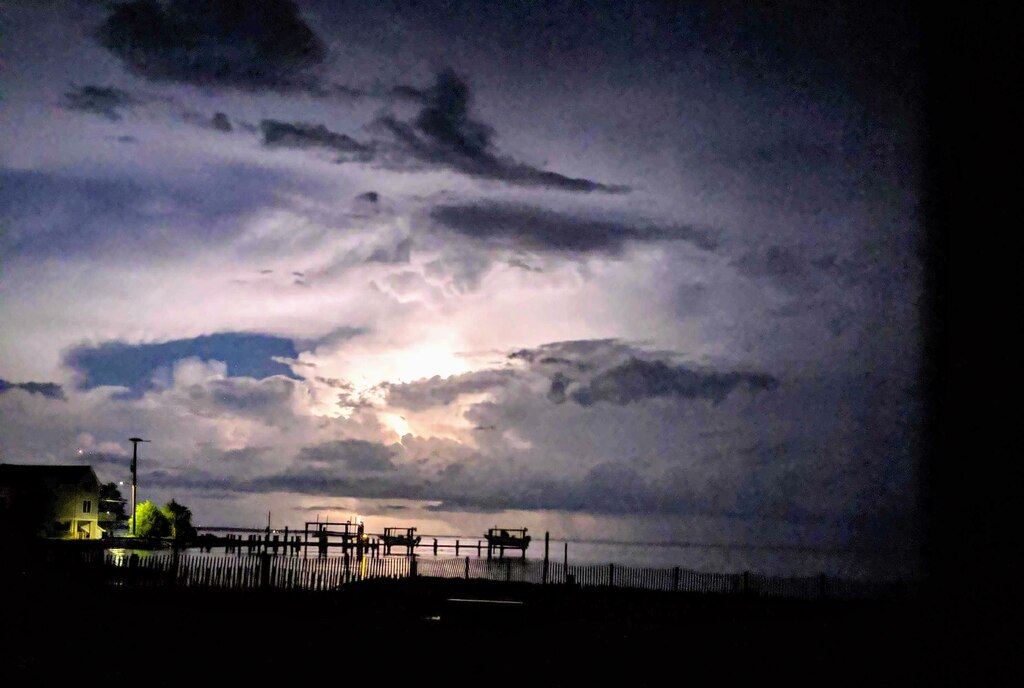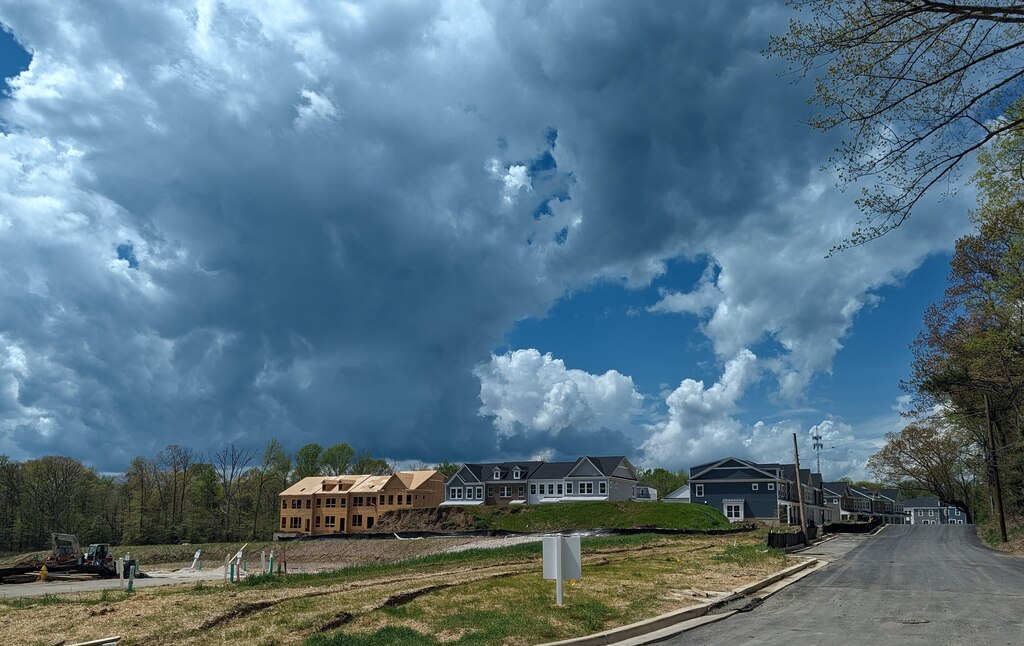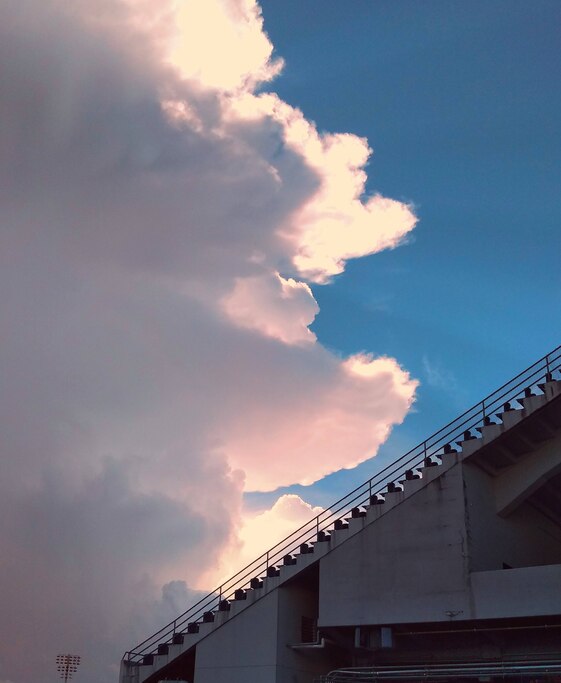“The Tempest” begins with a storm. That’s all Shakespeare provides, just a few stage directions: “Enter Mariners wet.” And some yelling.
For Sally Boyett and her team at the Classic Theatre of Maryland, that is enough.
“We’ve got an elaborate soundscape that has dialogue and sound effects in it,” she said. “We’ve got lightning effects, a lot of emotion and flash, color and moving lights. We’ve got atmospherics, which is haze and ground fog.”
This level of theatrical wizardry is possible only because this year’s summer production moved inside for its run through July 23, the first time in eight years. One reason? It’s just too stormy.
The Baltimore Banner thanks its sponsors. Become one.
“It’s the first summer we’re staging it indoors,” Boyett said. “Otherwise, it wouldn’t be happening with all this weather. We would have had all our tech rehearsals rained out.”
Summer is the season when storms and clouds pile atop each other — white, pink and gray towers dominating the Chesapeake Bay until bang, the tempest unleashes. Climate change, spelling hotter and wetter weather, is increasing the frequency and severity of storms. Maybe it’s altering clouds, too.
The past few days along the bay have been filled with scattered thunderstorms, a literal description of the weather. Rain can be falling hard on my side of the street while yours is dry. Sun showers are common, falling from a bank of dark clouds as the sun peeks out to transform raindrops into falling gems.

Above it all are the clouds, and clouds are complicated. It’s clear storms are changing, but clouds are harder to understand than storms. Not that scientists don’t try.
“Clouds are indeed wonderful and constantly changing on daily scales, and clouds are constantly changing in decadal time scales,” said Russell Dickerson, a professor of atmospheric science at the University of Maryland, College Park. “But manmade greenhouse gasses are affecting them on the decadal and century scales.”
The Baltimore Banner thanks its sponsors. Become one.
Nephology is the study of clouds, and the National Oceanic and Atmospheric Administration explains the basic process this way: “Clouds form when the invisible water vapor in the air condenses into visible water droplets or ice crystals. For this to happen, the parcel of air must be saturated, i.e. unable to hold all the water it contains in vapor form, so it starts to condense into a liquid or solid form.”
This time of year, that’s rain and hail, punctuated for emphasis with lightning and thunder.
Clouds cool the surface. As they move across the sky, they also carry pollutants in the form of particles from one part of the world to another. Even if greenhouse gasses are the highest they’ve been in nearly 1 million years, studies show the air in the United States has the least amount of soot and smog since 1950. And catastrophic events can change that process without much warning.
The Canadian wildfires that filled East Coast skies with brown haze this summer might be seeding some of the fantastical cloud formations seen so far in June and July, Dickerson said, making them darker and bigger and hotter.
“Maybe,” Dickerson said.
The Baltimore Banner thanks its sponsors. Become one.
Living on the Chesapeake Bay for most of my life, I’m an amateur diviner of clouds and weather. The bay is a cloud factory, and while the technical explanations are satisfying in one way, they can leave out the sense of wonder in a summer raincloud, the awe of a dark funnel or the majesty projected by a boiling thunderhead.
“Convective clouds need heat and water, that’s their fuel,” Dickerson said. “We’ve got that in spades here over the summer. We get good thunderstorms. We’re blessed with them — well, if you’re a tree you’re blessed.”

The impact of climate change is moderated in Maryland by its mid-latitude weather patterns. Global climate changes are about average here, but they are visible.
“We’re a bit warmer,” Dickerson said. “Rain patterns have shifted a little bit, in that there’s a little more in the fall and a little less in the summer.”
The clouds, so seemingly transitory yet subject to much slower change, seem safe for the moment.
The Baltimore Banner thanks its sponsors. Become one.
They scatter as they always do in random formations, or march along the bay skyline like a procession of floating elephants. Sometimes at night, when the storm is just out of reach, they light up like giant luminous jellyfish.
You can probably guess that I have a lot of photos of clouds. I tend not to show them to many people because clouds are so commonplace, so wonderfully ordinary. Meditating on voluminous constructions of moisture too loudly marks you as a daydreamer, maybe a time waster.
I think that’s the wrong idea. Clouds are a refuge, a place to look upward when you need to shake loose the troubles holding you down.
My wife and I were driving across the Spa Creek bridge in downtown Annapolis for a quick dinner Monday and spotted a bank of opalescent pillows rising atop the city’s familiar outline of historic buildings. I didn’t do her joy justice with my blasé, journalist’s I’ve-seen-bigger reaction. Woof, wrong response.
It was a glorious cloud and our shared experience of this climactic magic deserved to be celebrated.
The Baltimore Banner thanks its sponsors. Become one.

I should have said the names out loud — cirrocumulus, altocumulus, and that marvelous construction of vowels and consonants, cumulonimbus — to conjure the storm, like Shakespeare’s Ariel, the captive spirit who brings on “The Tempest” to satisfy Prospero’s revenge.
Summer showers and clouds are part of life on the Chesapeake. As I talked this week with Boyett about her art and Dickerson about his science, each commented on storms passing over them. I was somewhere else: waiting for rain under that same sky full of clouds, bringing a portent but never a promise.
Boyett has staged “The Tempest” before, and the decision to move inside was made long before our Chesapeake tempests arrived. Renovations were planned for their normal outdoor spot. But moving out of the weather eluded serious threats and created the chance to go big on sound and fury.
“We know you can get a very rainy July, where out of 12 performances you can lose two to four to rain,” she said. ”It was a happy coincidence.”
That’s what it means to be fascinated by clouds and storms. You find your sunshine where you can.
The Baltimore Banner thanks its sponsors. Become one.






Comments
Welcome to The Banner's subscriber-only commenting community. Please review our community guidelines.